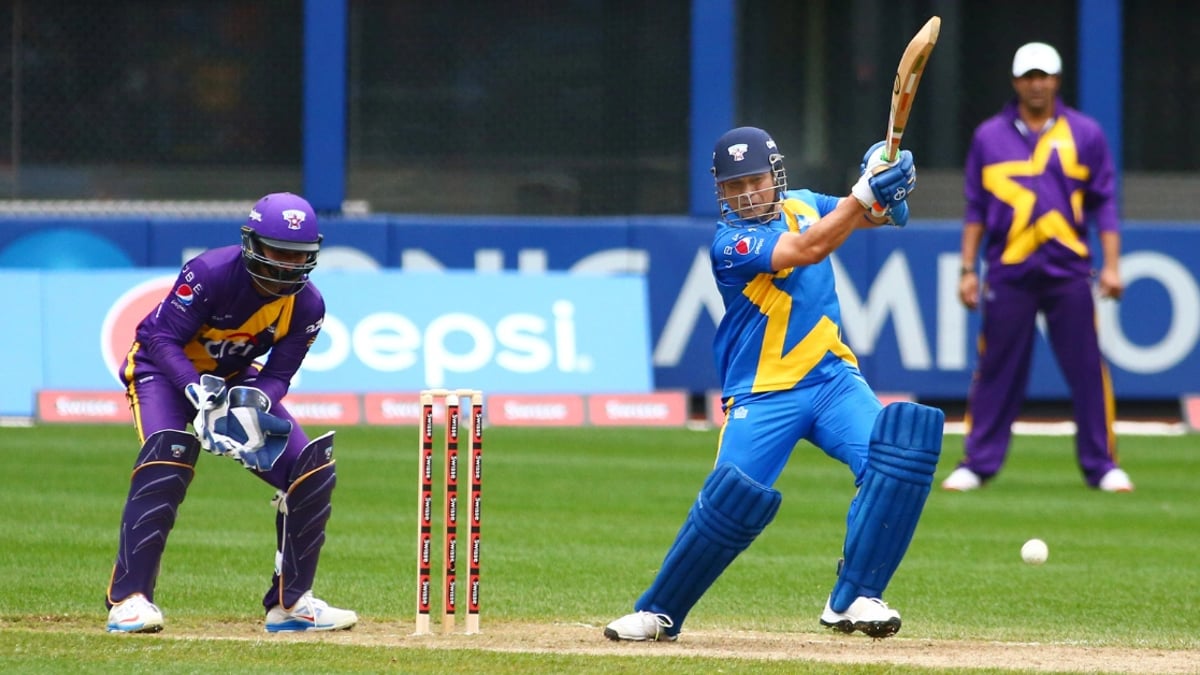One-Day Internationals Cricket Betting Strategy

- #ad. 18+. Gamble Responsibly. Gambleaware.org. Must be 21+ and present in OH. Gambling Problem? Call 1-800-GAMBLER
Cricket is one of the world’s most popular sports, and betting on ODIs has grown rapidly across Asia, Europe, and Australia. The rise of cricket bettors and the popularity of betting sites further underscore the format's excitement.
Many bets are placed on the action while games are taking place. The best cricket betting sites offer insights and odds tailored explicitly for ODI matches' strategic depth and unpredictability, enhancing the viewing and online gambling experience.
We've compiled this One-Day International format cricket betting strategy guide to offer tips for new and experienced cricket betting fans.
ODI Cricket Betting Glossary
- Wicket: the set of stumps and bails at each end of the pitch
- Yorker: a delivery bowled so that it lands at the batsman's feet, making it difficult to hit
- Googly: a deceptive ball bowled by a leg-spinner that turns the opposite way
- Stock Delivery: the primary or most reliable delivery a bowler uses, typically their go-to ball in most situations
- Pace Bowler: Bowler who relies on speed to deliver the ball, typically aiming to bowl at high velocities to beat the batsman with bounce and movement
- Spinner: a bowler who uses spin to turn the ball, typically relying on slower speeds and variations in flight to deceive the batsman
- Death Bowler: a bowler who specializes in the final overs of a limited-overs match, focusing on restricting runs and taking wickets with yorkers, slower balls, and variations
- Powerplay: a set of fielding restrictions that limits the number and placements of fielders outside the 30-yard circle
What are One-Day Internationals?
One-Day Internationals (ODIs) are one of the most popular formats of cricket, and they occupy a middle ground between the long-format Test cricket (which can last up to five days) and the fast-paced Twenty20 (T20) format.
Those who associate the game with country village life and lazy summer afternoons will be shocked at the fast-paced action of One-Day Internationals (ODIs). Bright coloured jerseys replace cricket whites as teams of 11 battle it out over two innings of 50 overs, and nail-biting finishes are commonplace.
One-Day Internationals Timeline
- 1971: The ODI cricket format was created after rain disrupted the Ashes series at the Melbourne Cricket Ground. The original five-day test was replaced with a 40-over match, which drew 46,000 spectators.
- 1975: The first ODI Cricket World Cup was held, with West Indies emerging victoriously.
- 1977: World Series Cricket introduced night matches, coloured shirts, and field restrictions.
- 1987: Matches were standardised to 50 overs.
- 2019: The Cricket World Cup flourishes, boasting nearly 100 million daily viewers on India's Hotstar.
How Many Overs are in an ODI?
ODI matches began with a 40-over format but evolved to the standard 50-over format by 1987.
This 50-over framework balances the long haul of Test cricket and the excitement of T20 matches. While Tests provide a drawn-out game of patience, and T20s demand immediate aggression, ODIs blend strategy with pacing, allowing teams to build momentum steadily before an explosive finish.
Occasionally, tournaments might deviate from the 50-over norm due to exceptional circumstances, like weather disruptions or tournament-specific rules, ensuring games finish within a specific period.
What Sets ODI Apart?
One-day international cricket, known for its volatility and unpredictability, offers a unique blend of aggression and strategy.
It balances the rapid-fire nature of T20 games and traditional Test matches' nuanced, methodical play. While T20 matches are a whirlwind of attacking play, ODI play requires a subtle approach, allowing teams to build momentum.
It’s a perfect middle ground that will appeal to players wanting to bet on the outcome of the next ball as much as it will to fans concerned with teams winning competitions.
ODI Betting Markets
- Match Winner: Bet on which team will win the match, regardless of the margin of victory. You can also bet on whether the match will end in a tie.
- Toss Winner: Bet on which team will win the pre-match coin toss.
- Over 0.5 Runs on the First Delivery: Bet on whether the first ball of the match will result in at least one run (includes extras and byes).
- First Ball Outcome: Wager on the specific result of the first ball (e.g., dot ball, run, four, wicket, wide).
- Total Runs: Bet on the total number of runs scored in the match or by a team, typically using over/under lines.
- First to 10 Runs: Bet which team or batter will reach 10 runs first.
- Top Batsman: Bet which player will score the most runs for their team or overall in the match.
- Top Bowler: Bet which bowler will take the most wickets for their team or the entire match.
- Half Century/Century Markets: Wager on whether a player will score 50+ or 100+ runs, or how many players will do so in the match.
- Total 4s/6s: Bet on the number of boundaries (4s or 6s) hit during the match, either total or by a specific team/player.
Tips and Strategies for ODI Betting
Knowing the rules specific to ODIs is crucial for cricket bettors. Understanding nuances like the Powerplay restrictions or rain-rule adjustments can be game-changers for your betting strategy. Informed bettors who understand the game’s regulations have a better chance of picking up wins when betting on ODIs.
Do Your Research
Coming up with a successful cricket betting strategy will require some research. Look at how the teams have been performing lately. Teams that win regularly usually have more confidence, giving them the edge.
You also can’t ignore the players—when a key player is in great form, they can change the game.
It’s helpful to look at past matchups and see how teams perform under certain conditions. By putting all that together—team form, individual performances, and historical trends—you’ll have a better chance of making a smart bet.

Assess Ground Trends
Assess the ground trends, as changes to the pitch's conditions can dramatically affect the play.
A damp surface and a “greener” wicket can favour fast bowlers, while the drier conditions in India and Pakistan result in much slower games. As the running batsmen churn the wicket, the ball bounce will become much more inconsistent, and working out who this will favour should be key to your approach.

Understand the Importance of the Coin Toss
The initial coin toss, determining which team will take to the batting crease first, is a considerable factor in one-day cricket. If a team with a particular preference for batting or bowling wins the toss, the perceived advantage can swing the odds heavily in their favour.
This makes an interesting decision for bettors looking into the outright winner market. The best way to assess a good total for the first innings is to analyse how the pitch is playing and how the bowlers are performing, so it sometimes pays to hold off on your bets for long enough to gather more information. Of course, exercising caution will impact your potential return.

Final Conclusion on ODI Betting Strategies
The world of ODI cricket betting remains as compelling as ever, offering fans a range of markets for every game. If you wager at the best cricket betting sites, keeping up with cricket news is vital. Team news, player injuries, and other unforeseen developments can drastically sway the odds. The uncertainty is part of the appeal of placing cricket bets, as you can jump on sudden changes and net big wins.
While cricket's rapid pace and unpredictability make it a thrilling spectacle, the well-informed and updated bettor stands the best chance of reaping the rewards.











